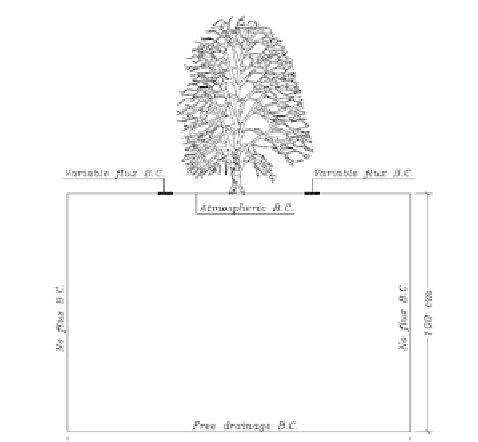Agriculture Reference
In-Depth Information
where: θ is volumetric soil water content (L
3
L
-3
), h is the soil water pressure head (L), t
is the time (T), r is the lateral coordinate (L),
z
is the vertical coordinate positive down-
wards (L), K is the unsaturated hydraulic conductivity (LT
-1
), and S is the sink term
accounting for root water uptake (T
-1
). On the other hand, the solute transport was
described using the advection-dispersion Eq. (9) considering advection-dispersion in
the liquid phase, as well as diffusion in the gaseous phase.
9.2.1 SDI SYSTEM AND EXPERIMENTAL AREA
In the present study, the simulated APRDI system was set up to irrigate tomato (a typi-
cal crop in the study area) through two surface drip lines per tomato row spaced 40,
60, and 80 cm. The distance between emitters was 35 cm and the spacing between to-
mato rows was 140 cm. El-Salam Canal cultivated land is characterized by low annual
rainfall, approximately 150 mm/year, and high annual potential evapotranspiration.
Maximum temperatures in the study area during July-August range from 41 to 46 °C
and minimum temperature during December-January vary from 8 to 19 °C.
9.2.2 MODELING DOMAIN GEOMETRY
The simulated domain for water flow and solute transport was rectangular, 100 cm
deep and 140 cm wide with a tomato plant located in the middle of flow domain and
with a trickle emitter placed at soil surface in the location of drip line. The drip line
was assumed as a line source with equal flow between emitters [21] and the flux radius
was taken equal to 6 cm as neither ponding nor surface runoff was assumed to occur.
Unstructured triangular mesh with 3239 2-D elements was used to spatially discretize
the transport domain. Mesh refinement was done closer to the soil surface where rapid
change in flux occurs. Figure 1 shows a conceptual diagram of the simulation domain.
















Search WWH ::

Custom Search